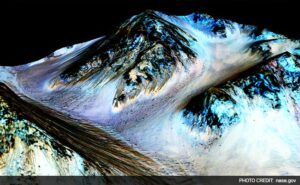Astronomers have observed a spectacular cosmic event where a massive black hole is disrupting two celestial objects, one of which was a star. The discovery, made with NASA’s observatories, including Chandra, NICER and Hubble, alongside India’s AstroSat, provides insights into the behaviour of stellar debris around supermassive black holes.
History
Back in 2019, astronomers observed a star venturing too close to a supermassive black hole. The star was shredded by the intense gravitational forces, known as a tidal disruption event (TDE). The remnants of the star formed an accretion disk – a swirling graveyard of stellar material around the black hole. For several years, this disk remained relatively stable, but recently, astronomers noted something extraordinary. The disk expanded and began interacting with a second object, either a star or possibly a smaller black hole previously orbiting at a safe distance.
Now, this second object is colliding with the stellar debris disk every 48 hours, creating dramatic eruptions of X-rays each time it passes through. “Imagine a diver repeatedly entering a pool and causing a splash each time,” said Matt Nicholl of Queen’s University Belfast. “The star here is like the diver, while the disk acts as the pool, creating a cosmic ‘splash’ of gas and X-rays.”
Astronomers have long documented TDEs, where a single star is destroyed by a black hole in one intense burst of energy. More recently, however, a puzzling phenomenon known as quasi-periodic eruptions (QPEs) has also been observed. These are bright X-ray flashes from the centres of galaxies that appear in regular intervals but were poorly understood – until now.
“There had been feverish speculation that these phenomena were connected, and now we’ve discovered the proof that they are,” said Dheeraj Pasham from the Massachusetts Institute of Technology (MIT). It’s like solving two cosmic mysteries at once,” said Mr Pasham.
The event, now named AT2019qiz, was first identified in 2019 by the Zwicky Transient Facility at the Palomar Observatory. As the accretion disk expanded and began interacting with the second object, NASA’s Chandra Observatory captured three separate sets of X-ray data over several hours, providing clear evidence of repeated eruptions.
NICER, another NASA instrument aboard the International Space Station, continued monitoring AT2019qiz and confirmed the X-ray eruptions occurred every 48 hours. Complementary observations from NASA’s Swift observatory and India’s AstroSat telescope further reinforced these findings. AstroSat’s unique capability to observe both X-rays and ultraviolet (UV) light provided critical data that helped astronomers confirm the size of the accretion disk and the repetitive nature of these eruptions.
Gulab Dewangan, a co-author from the Inter-University Center for Astronomy & Astrophysics (IUCAA) in Pune, talked about AstroSat’s role. “India’s AstroSat mission provides unique UV/X-ray capability for studying such events,” he said, as per an ISRO report. “AstroSat’s Soft X-ray Telescope and the Ultraviolet Imaging Telescope (UVIT) both detected the source AT2019qiz, but the eruptions were only seen in X-rays. Future sensitive simultaneous X-ray and UV observations of similar eruptions will enable a deeper investigation into their nature.”
“This is a huge breakthrough in our understanding of the origin of these regular eruptions,” said Andrew Mummery of Oxford University. “We now realise we need to wait a few years for the eruptions to ‘turn on’ after a star has been torn apart because it takes some time for the disk to spread out far enough to encounter another star.”



